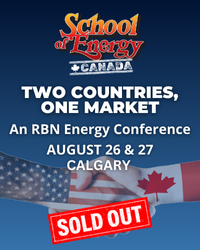In the latter half of 2013 two very similar pipeline projects dueled it out with shippers in North Dakota to secure commitments to move crude out of the Bakken into the Midwest and points south. After addressing some concerns raised by federal regulators about tariff structure, the Enbridge and Marathon Petroleum Company Sandpiper proposal appears to be on track for approval. The rival Koch Dakota Express project was abruptly cancelled in January of this year. In pure capacity terms both these pipelines were “nice to have” not “need to have”. Today we complete our analysis of the fate of these competing projects.
In Episode 1 of this two part series we reviewed how the Sandpiper project moved forward in February of this year (2014) – seeking approval of a new tariff structure from the Federal Energy Regulatory Commission (FERC) while the rival Dakota Express project hit the skids when its sponsor Koch Industries pulled the plug in January. Our analysis of the competing projects began by looking at whether either pipeline was required in terms of the capacity “stack” in North Dakota. We determined that given the amount of rail loading capacity built in North Dakota in 2012 and 2013, neither pipeline was absolutely a “need to have” project (although don’t forget that not all of that rail capacity is necessarily available). But pipelines still can offer cheaper routes to market than rail and can therefore be more attractive as long as they offer some flexibility of destination to shippers. In this Episode we compare the routes and connections that the two rival pipeline projects offered Bakken producers.
We start with the details of the Koch Dakota Express proposal that RBN covered at the time of its launch in July 2013 (see Express Yourself (Dakota)). The project involved construction of a brand new 600-mile pipeline from an unidentified location in “Western North Dakota” (Koch didn’t say where exactly) to Minneapolis, MN where it would have connected with the company’s existing Wood River crude pipeline. The Wood River pipeline currently runs south to north from Wood River, IL to feed a Koch affiliate 277 Mb/d Flint Hills Resources refinery in Minneapolis. The project called for reversing the Wood River pipeline to flow from Minneapolis to a Koch terminal at Hartford, IL. A new pipeline section would then have linked Hartford to Patoka, IL. From Patoka Koch planned to explore building a connection to the proposed Eastern Gulf Crude Access Pipeline (EGCAP) – at the time a joint venture between Energy Transfer Partners and Enbridge. [This project is also known as the Trunkline reversal - see Enbridge SAX and East Coast Pipe]. Like the Sandpiper proposal, the Koch Dakota Express project was expected to start up in 2016. The initial capacity proposed for the pipeline was 250 Mb/d.
Join Backstage Pass to Read Full Article






